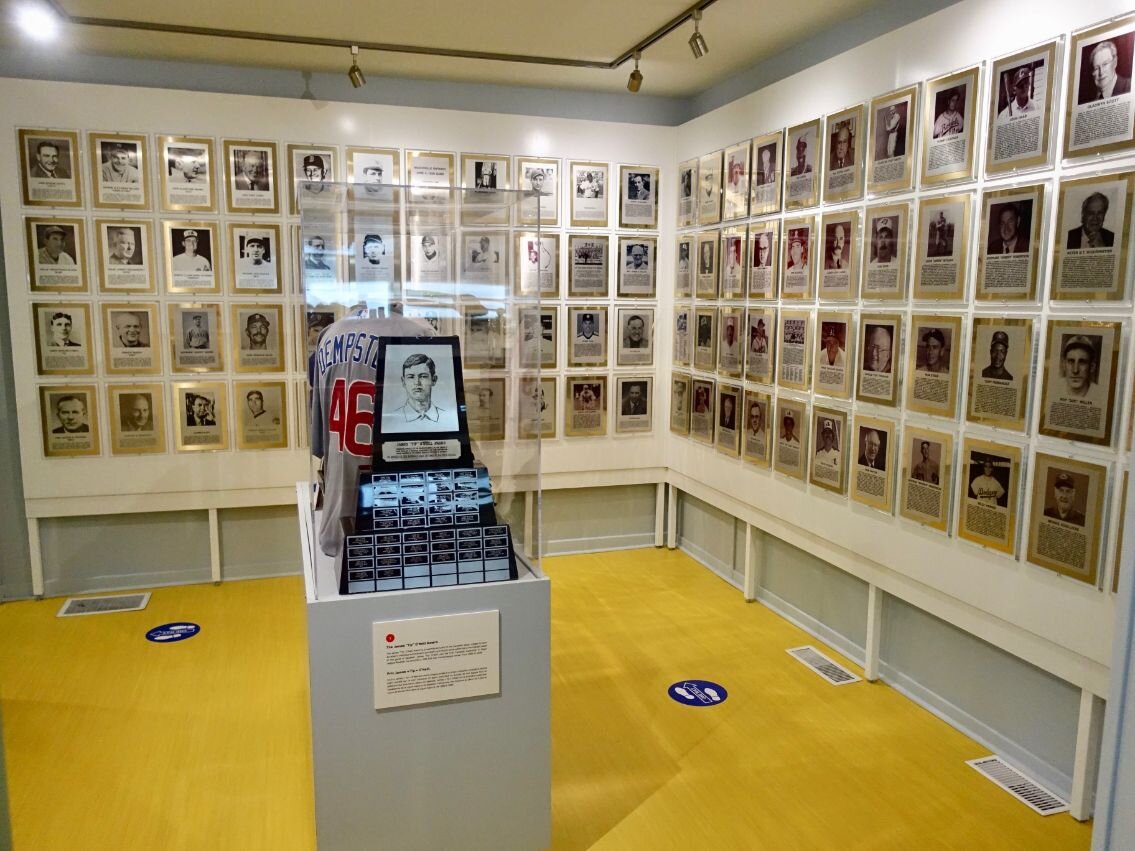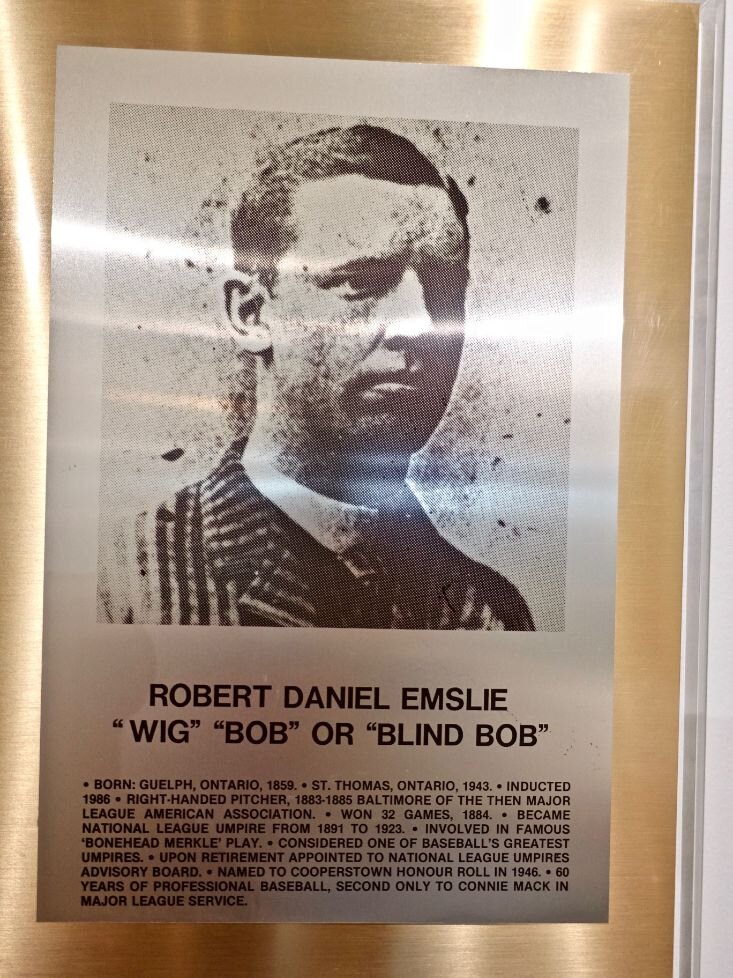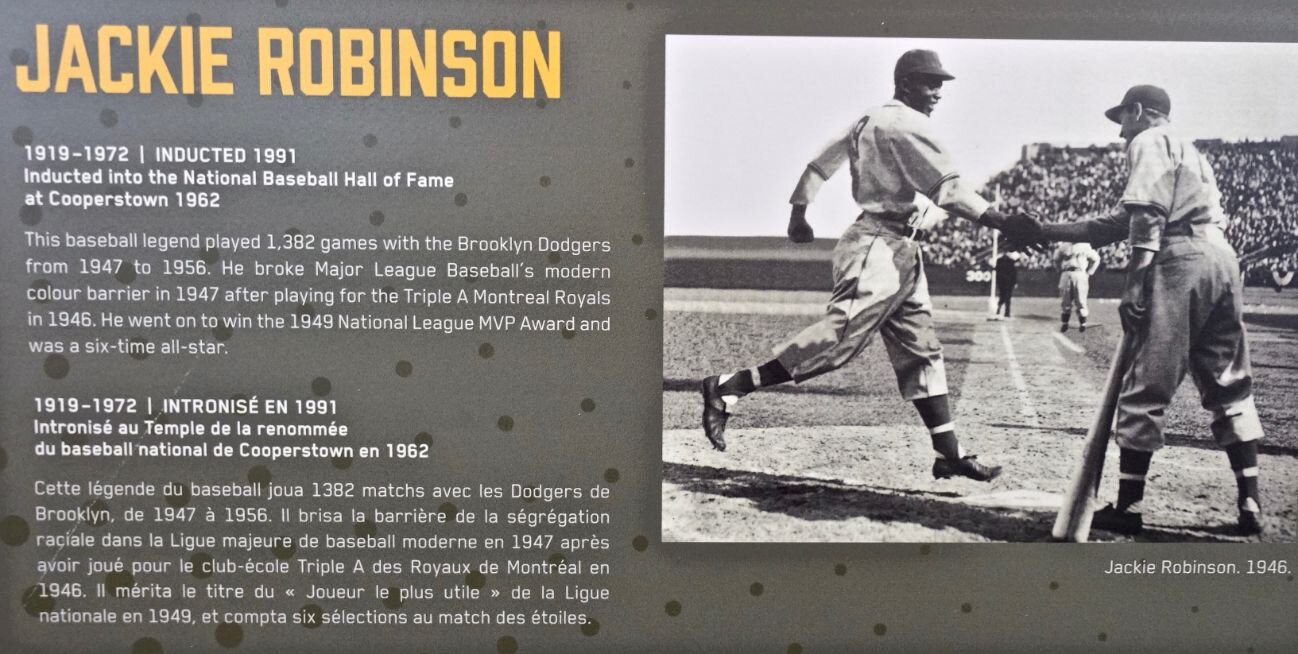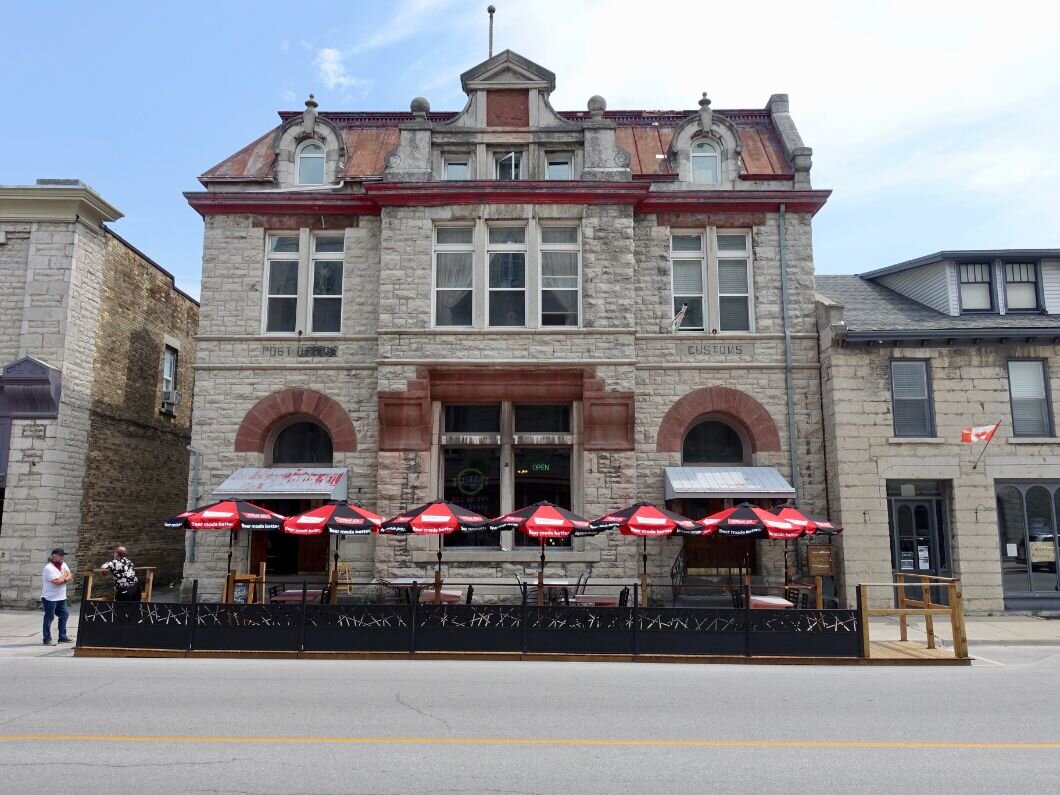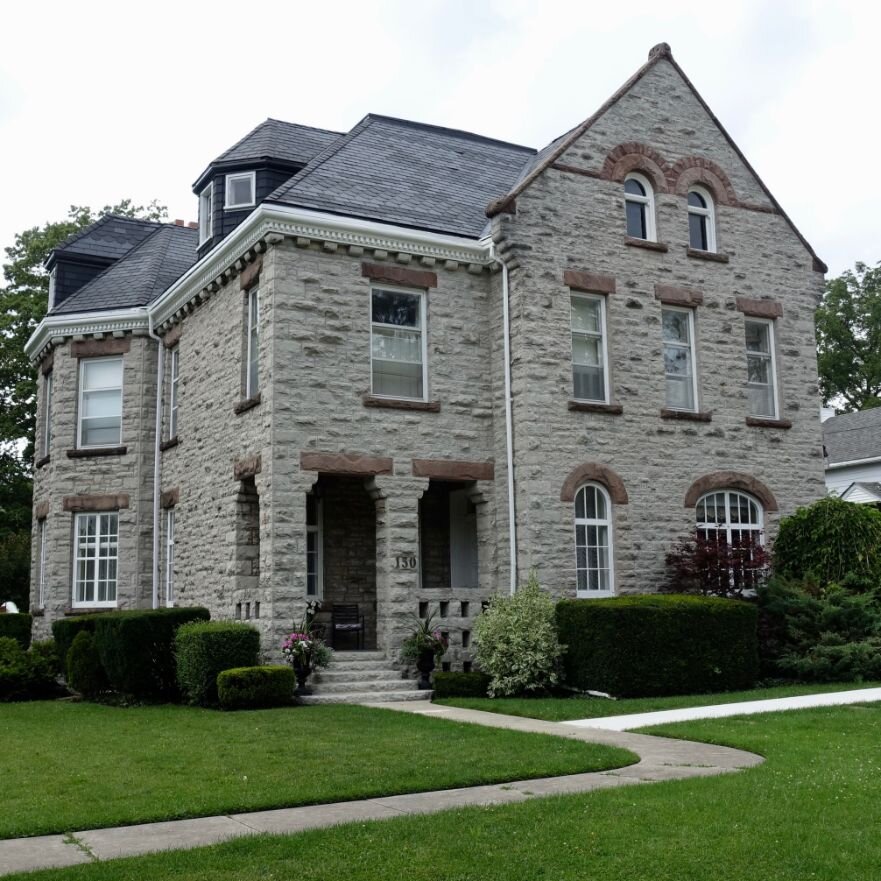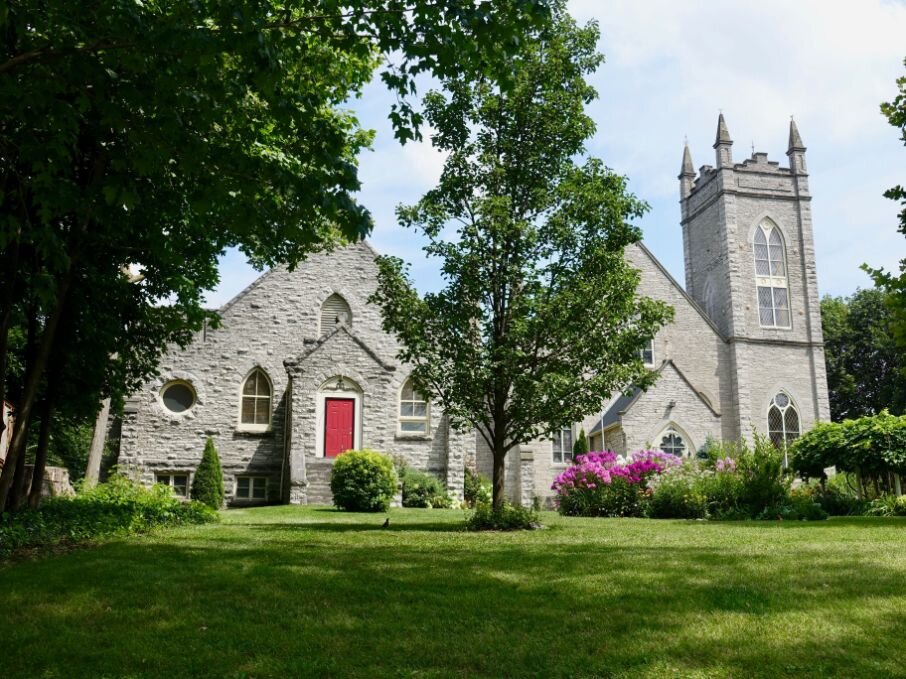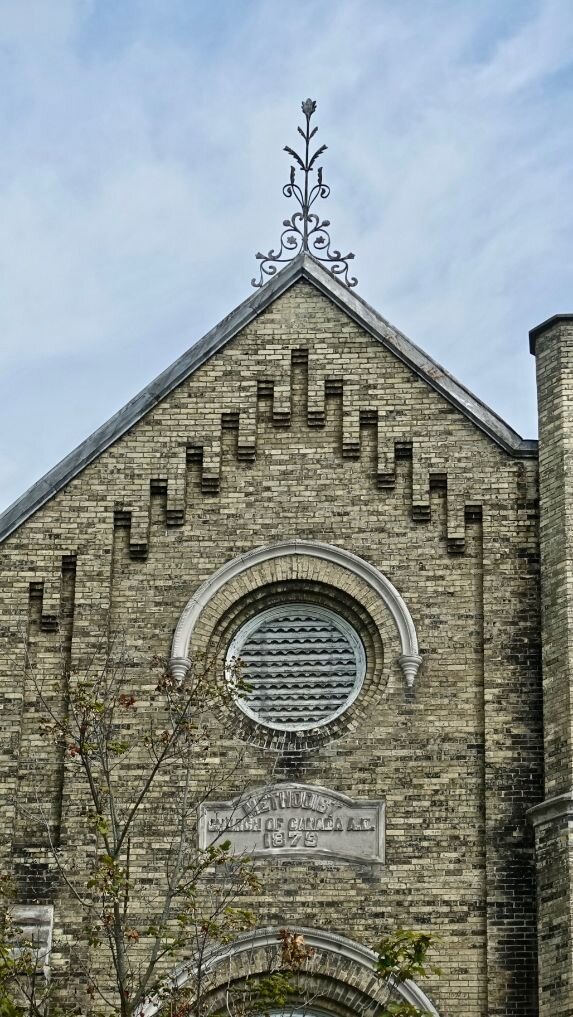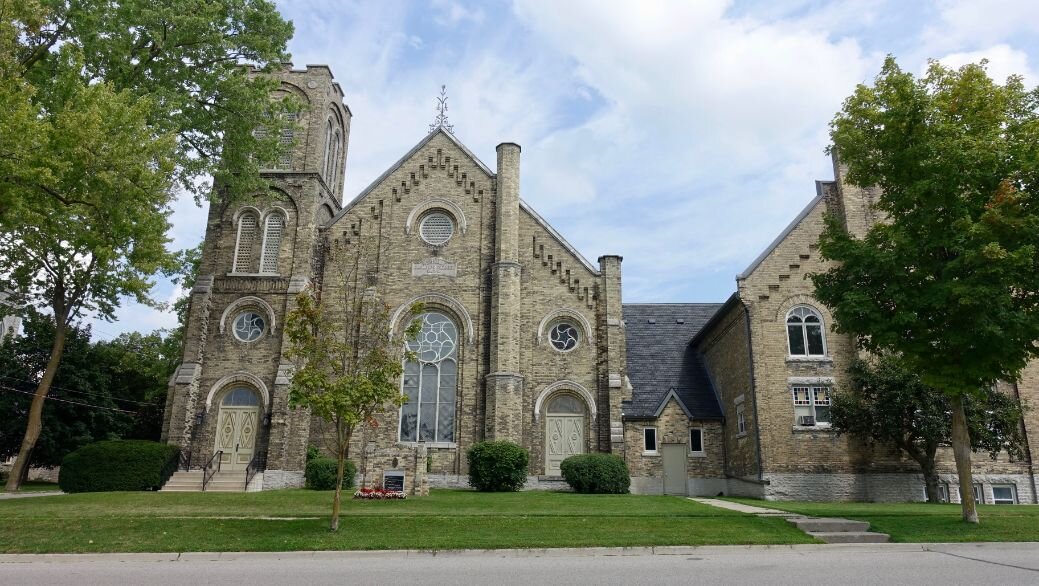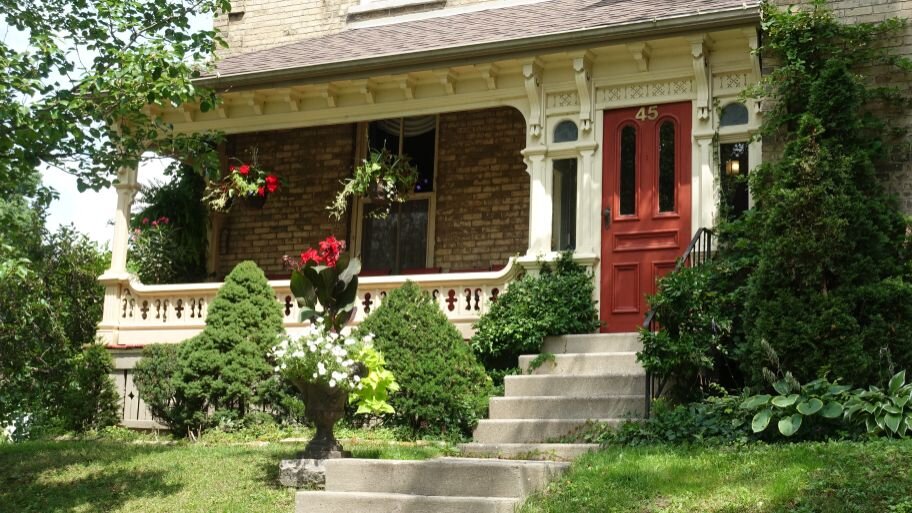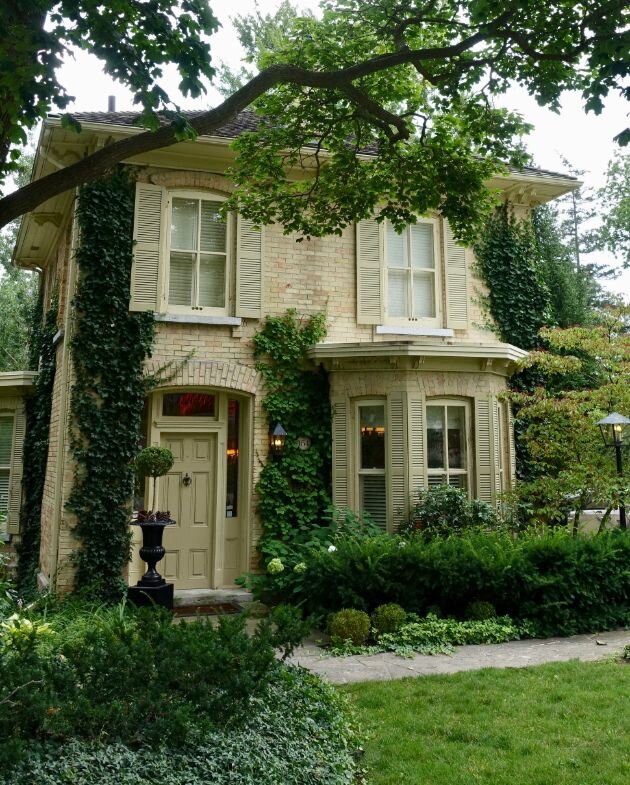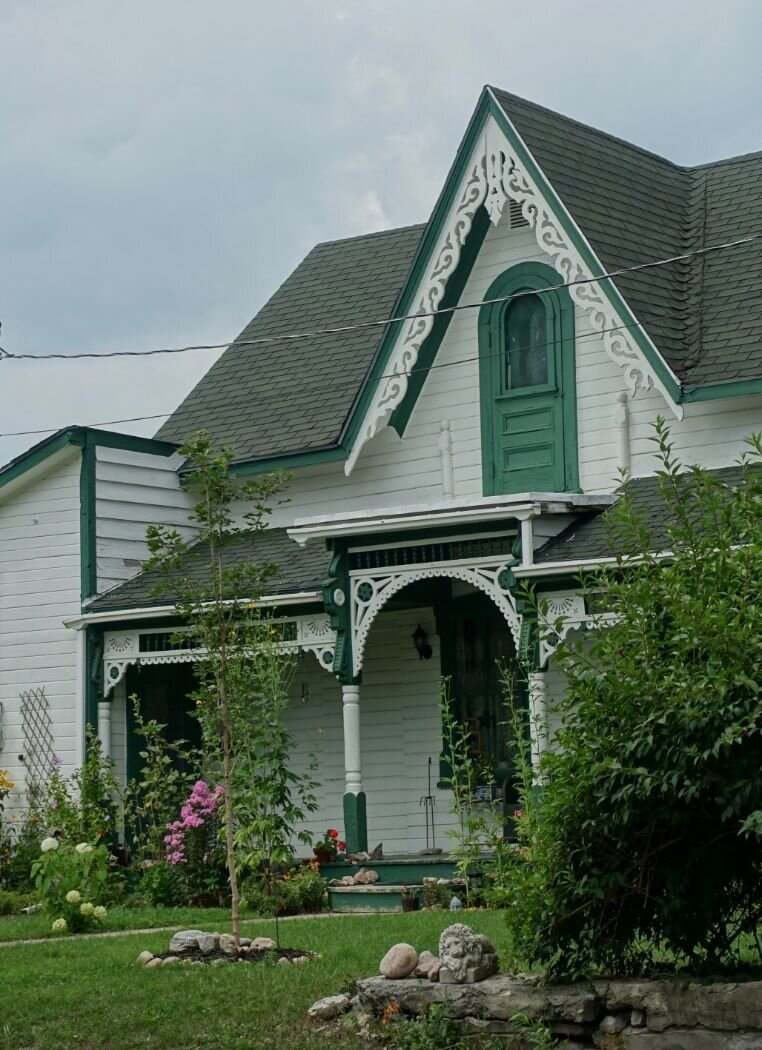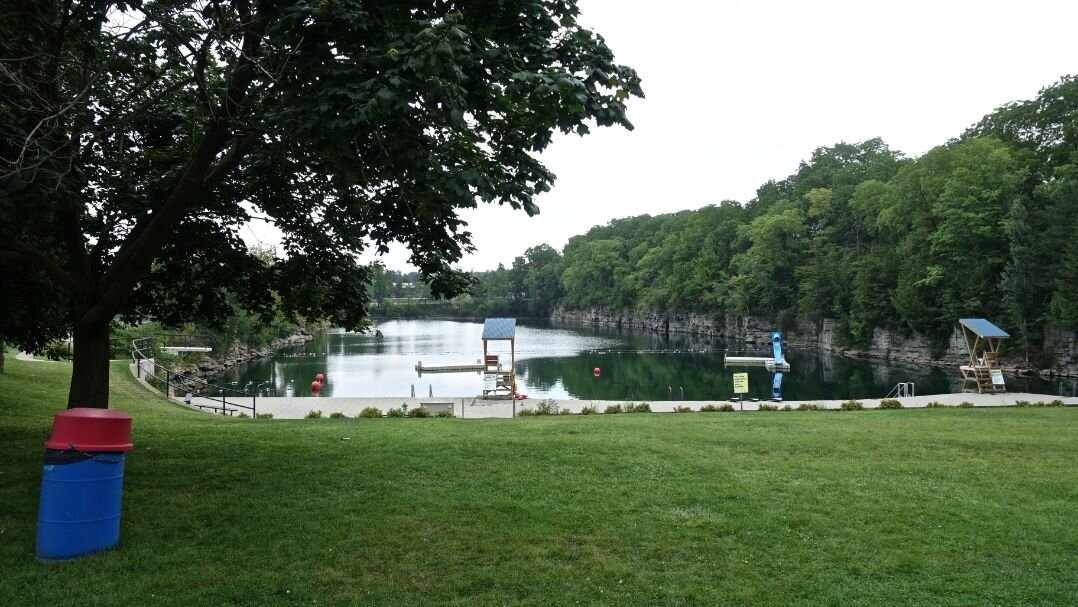Ontario Road Trip: St. Marys: Baseball, Shopping, Swimming
The second day trip from London with my Mom was to St. Marys, as I had heard they have many well preserved historic buildings in their downtown, it is home to the Canadian Baseball Hall of Fame and Museum and has Canada’s largest outdoor swimming pool.
St. Marys nickname is “The Stone Town” due to the abundance of limestone in the area which resulted not only in numerous limestone buildings, but also the mega St. Marys Cement factory which dominates the town’s entrance. The town was established in 1844 and is still thriving today with a population of 7,000+. It is a reminder of how almost every Canadian city and town was established to capitalize on the natural resources nearby.
What I liked best about St. Marys were the unique window displays in the shops along Main Street. Even an insurance company had a funky window. It made for a great pedestrian experience.
Canadian Baseball Hall of Fame and Museum
The museum was founded in 1982 in Toronto at Exhibition Place, later moved to Ontario Place and then in 1994 was awarded to St. Marys. A strange choice, as you would think it would be in Toronto, home of the Blue Jays or perhaps even Montreal, home to Canada’s first major league baseball team (Expos) and it has a rich baseball history. However, the small towns in southern Ontario have a long history with baseball, including Fergie Jenkins who was born in Chatham, is perhaps Canada’s most famous baseball player and is in the National Baseball Hall of Fame in Cooperstown, New York.
FYI: Beachville (45 km southeast of St. Marys) boasts hosting Canada’s first baseball game in June 4, 1838, which precedes the common thinking that baseball was invented by Abner Doubleday in Cooperstown, NY, in the summer of 1839.
The Canadian Baseball Hall of Fame is located on the edge of town, in a large 32-acre baseball diamond complex next to the cement factory. The building is modest, consisting of a few rooms with artifacts and one with plaques to each of the individuals 133 individuals and six teams in the Hall of Fame. It is probably a 30 to 45 minute visit depending on how passionate you are about baseball. It lacks any hands-on activities that you would expect in a modern museum, with very little that would interest children, teens and even adults e.g. batting cage, simulators etc.
Some of the artifacts on display includes Fergie Jenkins and Larry Walker memorabilia, artifacts from Canada's two major league franchises, the Toronto Blue Jays and the Montreal Expos, a Babe Ruth collection, a large display on all the current MLB Canadians and a tribute to the Canadian women who played in the All-American Girls Professional Baseball League.
Historic Downtown
St. Marys downtown is indeed full of well-preserved public buildings like the Opera House (1880), Town Hall (1891) and public library (1904). In fact, the entire downtown is a Heritage Conservation District with 48 designated properties, and 151 properties designated as having historical significance town-wide. You could easily spend an hour wandering the streets connected to Queen Street aka main street, enjoying the heritage homes and churches.
I was pleasantly surprised to find that almost all of the downtown’s historic buildings are occupied by businesses making for a fun day of window-licking (window shopping).
The Town Hall building was designed by Toronto architect G.W. Gouinlock and built in 1892 using St. Marys limestone, with contrasting sandstone accents. Still the administrative centre of the town, the building contains council chambers, municipal offices and a public gallery.
Marys Opera House, is situated south of the intersection of Queen and Water Streets in downtown St. Marys. The four-storey limestone building was designed in the Gothic Revival style by architect Silas Weekes and was constructed between 1879 and 1880. Link: St. Marys Opera House Historic Places
In 1904 Andrew Carnegie donated $10,00 for this limestone library. Town Council agreed to provide the site and to maintain the library at $1,000 a year. J.A. Humphris was the architect, and Robert Clyde, local stonemason, was the builder. The building, with sturdy Grecian features - Carnegie’s preference, was completed in the summer of 1905, and has been in continuous use since.
Canada’s Largest Outdoor Swimming Pool & Fishing Hole.
St. Marys is also home to Canada’s largest outdoor freshwater swimming pool, located in quarry that was abandoned in 1920. The quarry became a popular swimming spot in the early ‘30s when it filled up with water and so in 1945 the City purchased the quarry and surround land to create an official public swimming pool that is still very popular today. It offers cliff jumping, paddle board rentals, sand volleyball court and water trampoline.
On the other side of the highway is a second quarry that has been converted into a “fishing hole” where you can catch Common Carp, Pumpkinseed and Rock Bass. No swimming is allowed in the fishing hole and no fishing in the swimming hole.
Last Word
St. Marys is an example of how heritage preservation can work with a mix of modern retail, restaurant and professional services to create a viable 21st century main street.
If you like this blog, you will like these links:
Torrington: Kitsch Capital of Alberta
London’s Quirky Museums: Funeral, Novelty, Hospital
Too Much Fun: Teapots to Hippos



